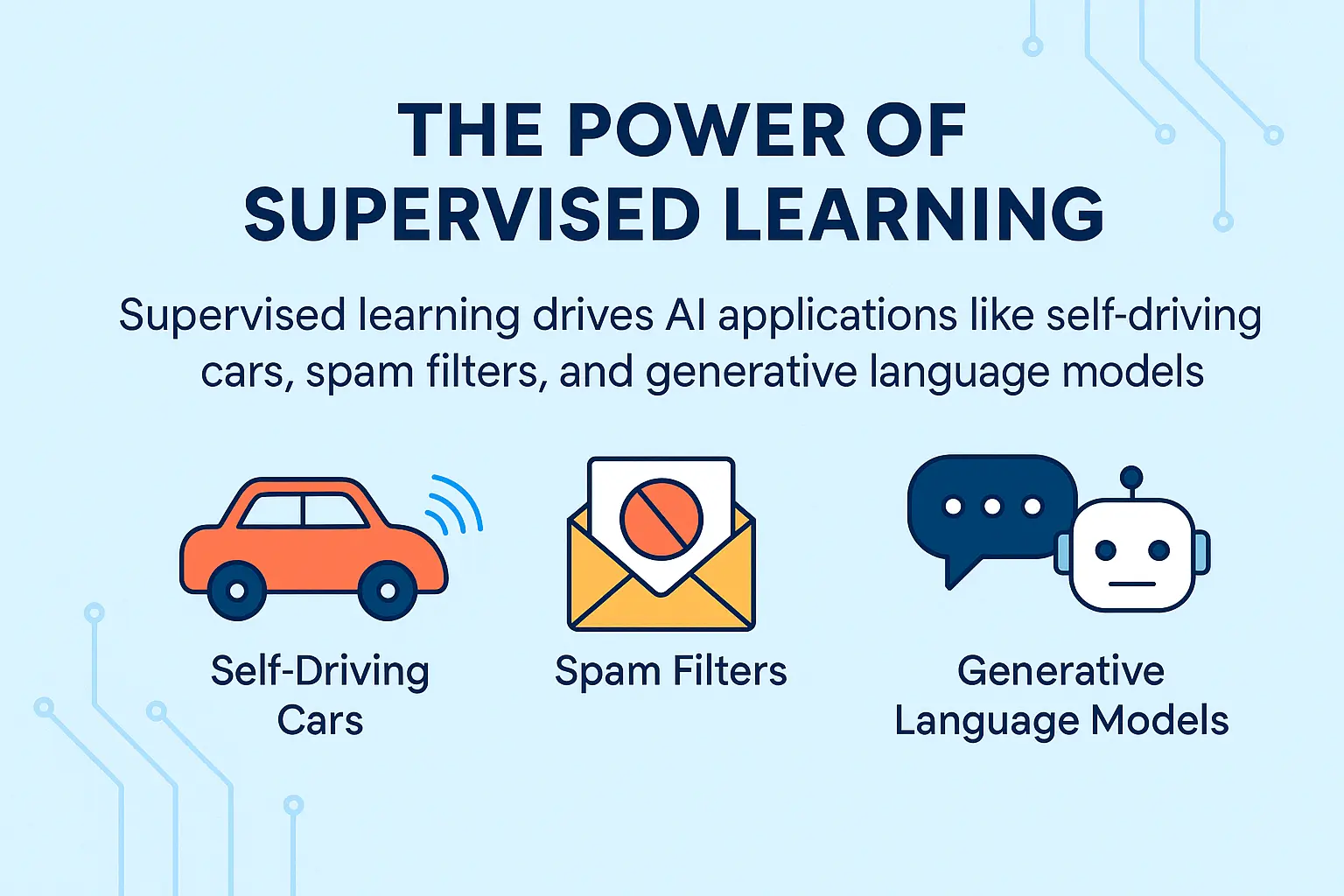The Power of Supervised Learning in Today’s AI Revolution

The Power of Supervised Learning in Today’s AI Revolution
In recent years, machine learning has revolutionised various industries, and its impact is only growing. Machine learning, particularly a subset known as supervised learning, plays a central role in AI applications such as spam filters, speech recognition, and even self-driving cars.
This guide will explore supervised learning, how it works, and why it’s so effective in the modern AI landscape.
What Is Supervised Learning?
Supervised learning is a type of machine learning where an algorithm is trained using input-output pairs. Essentially, the AI learns to map an input (A) to the desired output (B). Here are a few examples:
Spam Filters
Input: Email content
Output: Whether the email is spam (0) or not (1)
Speech Recognition
Input: Audio clip
Output: Transcribed text
Machine Translation
Input: English sentence
Output: Translated sentence in another language (e.g., Spanish, Chinese)
Online Advertising
Input: Ad details and user information
Output: Whether the user will click on the ad or not
Self-Driving Cars
Input: Image or radar data
Output: The position of other cars, helping the vehicle avoid collisions
Visual Inspection in Manufacturing
Input: Image of a manufactured product (e.g., a phone)
Output: Detection of defects, such as scratches or dents
Supervised Learning in Generative AI
Supervised learning is also a core component of generative AI models like ChatGPT. These systems are trained on vast amounts of text data and learn to predict the next word in a sequence. For example, if the AI sees a sentence like, “My favourite drink is lychee bubble tea,” it learns to predict the next word after each part of the sentence, such as predicting “lychee” after "My favourite drink is."
As a result, large language models (LLMs) like ChatGPT can generate human-like text based on a prompt, thanks to supervised learning.
Why Is Supervised Learning So Effective?
The rise of AI’s power, particularly supervised learning, is largely due to two factors: the availability of data and the rise of deep learning.
Data Availability
In the past, data used to be limited. However, with the rise of the internet, digital storage, and computing power, data is now more abundant than ever. As a result, AI systems can now be trained on vast datasets.
Deep Learning and Neural Networks
Neural networks, particularly deep learning techniques, have made supervised learning much more powerful. The larger the dataset and neural network, the better the performance of the AI. For instance, deep learning allows a speech recognition system to become much more accurate as it processes more data.
Key Implications of Supervised Learning
More Data Equals Better Performance
For the best performance in AI tasks, having more data is crucial. This is why the concept of big data is often mentioned. The more data AI has, the better it can learn and make predictions.
The Importance of Large Neural Networks
In addition to having lots of data, a large neural network is essential for achieving top-level performance. With the rise of specialised processors like Graphics Processing Units (GPUs), even smaller companies can now train large neural networks, enabling them to unlock the full potential of supervised learning.
The Impact of Supervised Learning on Modern AI
The combination of vast data, deep learning, and large neural networks has led to significant advancements in AI, including generative AI systems like ChatGPT.
These breakthroughs have transformed industries by improving product quality (e.g., visual inspection in manufacturing), enabling self-driving technology, and optimising advertising efforts.